Container Orchestration with OpenStack Heat
Introduction
This guide provides an introduction to Heat Orchestration through OpenStack. Outlined within this article are the basics of Orchestration and the mechanics of the Heat Orchestration Engine. Then we review a sample of a Heat Orchestration Template and provide the appropriate syntax. Lastly, we cover how to deploy a template and check the status of a Heat Stack.
Overview of Heat Orchestration
Orchestration tools utilize automation to deploy, manage, scale, and network containers. Within OpenStack, the primary orchestration component is Heat. Heat uses an orchestration engine for the automation of resources, infrastructure, applications, and services. These created resources are referred to as Stacks. Heat Stacks are deployed using Heat Orchestration Templates also referred to as HOT templates. HOT templates are created in YAML that passes instructions to the Heat Engine specifying the resources to be deployed.
How to View Heat Stacks in Horizon
To view all current Stacks within your OpenMetal Cloud, navigate to Project -> Orchestration -> Stacks. Within this section, you can view all your current stacks as well as launch and preview HOT templates.
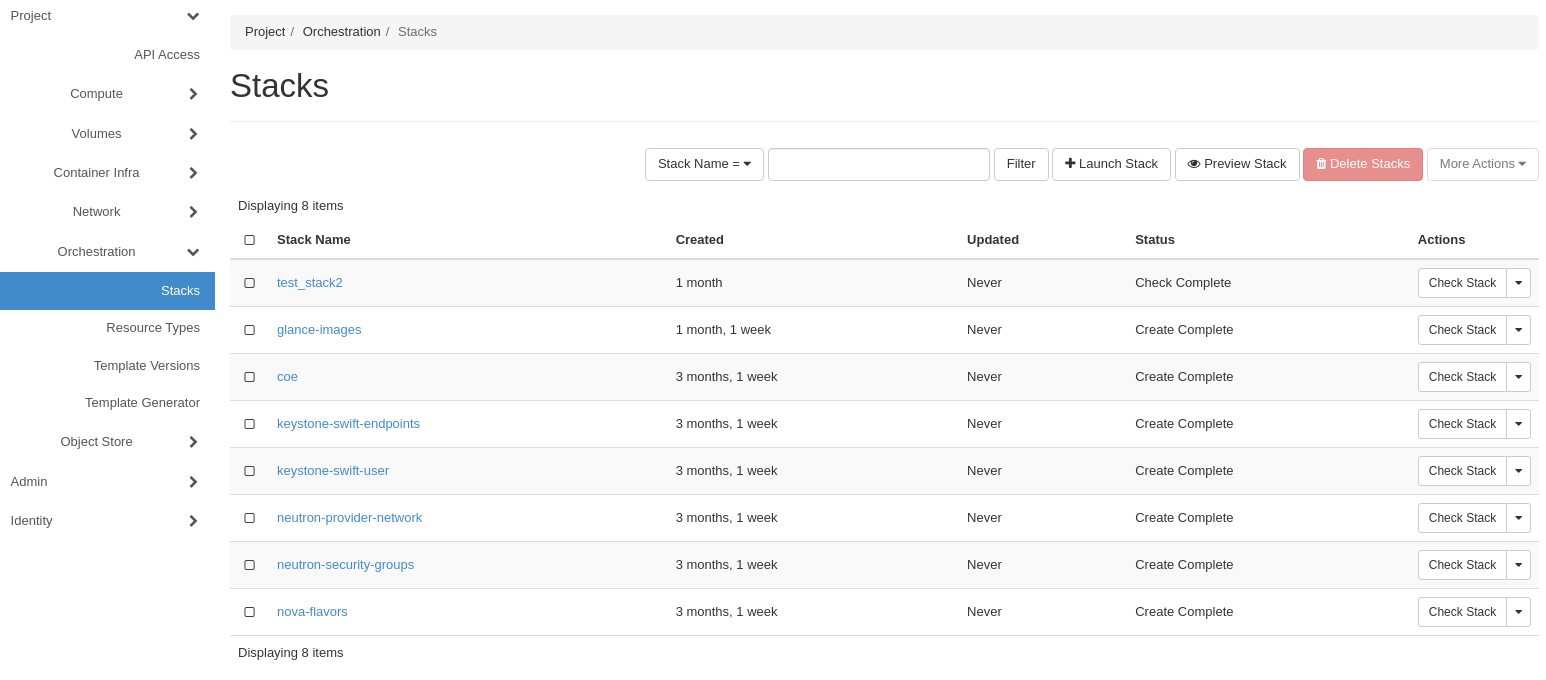
Architecture
Heat API receives rest API calls from the following sources: Horizon, HOT Templates, and through the Heat Client. The Heat API is then passed to RabbitMQ or another message broker which activates the Heat Orchestration Engine. The Heat Orchestration Engine then connects to resources including Nova, Glance, Neutron, and Cinder and parses instructions from the HOT template for functions and parameters. These functions and parameters are then used to create resources known as stacks.
Heat Orchestration Template Components
Central to the deployment of Heat and the creation of Stacks is the use of templates. Heat Templates are written in YAML with the following structure:
Template Version
The template version is formatted as date and corresponds to different versions of heat. The template version tells Heat how the template will be structured, what features can be validated, and what resources can be created. Currently, the latest template version that is supported is 2018-08-31 (rocky).
Description
Although optional, a description is highly recommended as it outlines the intended function of the template. This is particularly useful for templates that are not frequently used or are intended to be shared among various members of a team or project.
Parameters
Parameters are optional but allow a user to pass additional values to the template. These values are used to overwrite any default settings that are specified in the resources section.
Resources
Resources are what are ultimately created by the Heat Orchestration Engine. These values can be default values or input from the parameters above.
Output
Output in a Heat Template is optional. However, you can pass values from Heat upon execution of the template. These values are accessed through Heat API or client tools.
Sample Heat Orchestration Template
The following is an example of a Heat Orchestration Template to deploy an instance. In this example, all resources receive their values fed separately as parameters. When formatting parameters, each parameter is grouped in a nested block. The first line contains the name of the parameter and additional attributes are grouped below each element.
Attributes
- Parameter Name: Name of Parameter
- Type: Required value that supports the following types: string, comma_delimited_list, json, boolean
- Label: Optional attribute, creates a name for the parameter for additional readability
- Description: Optional attribute, creates a description for parameter
- Default: Optional attribute, default values for parameters if input is not specified by the user
Example Heat Orchestration Template:
heat_template_version: 2018-03-02
description: Simple template to deploy a single instance
parameters:
key_name:
type: string
label: Key Name
description: Name of key-pair to be used for compute instance
image_id:
type: string
label: Image ID
description: Image to be used for compute instance
instance_type:
type: string
label: Instance Type
description: Type of instance (flavor) to be used
network_name:
type: string
description: The network to be used
security_groups:
type: comma_delimited_list
description: Name of the Security Group
resources:
my_instance:
type: OS::Nova::Server
properties:
key_name: { get_param: key_name }
image: { get_param: image_id }
networks:
- network: { get_param: network_name }
flavor: { get_param: instance_type }
security_groups: { get_param: security_groups }
Deploying a Heat Template in Horizon
To deploy a heat template in Horizon, first, check to see that you have selected the appropriate project for your deployment and then navigate to Project -> Orchestration -> Stacks and locate Launch Stack near the top right.

Figure 1: Launch Stack
For this example, we have uploaded the template example as a file called
hot_example.yml using the Choose File button. After uploading your
example template, click Next.
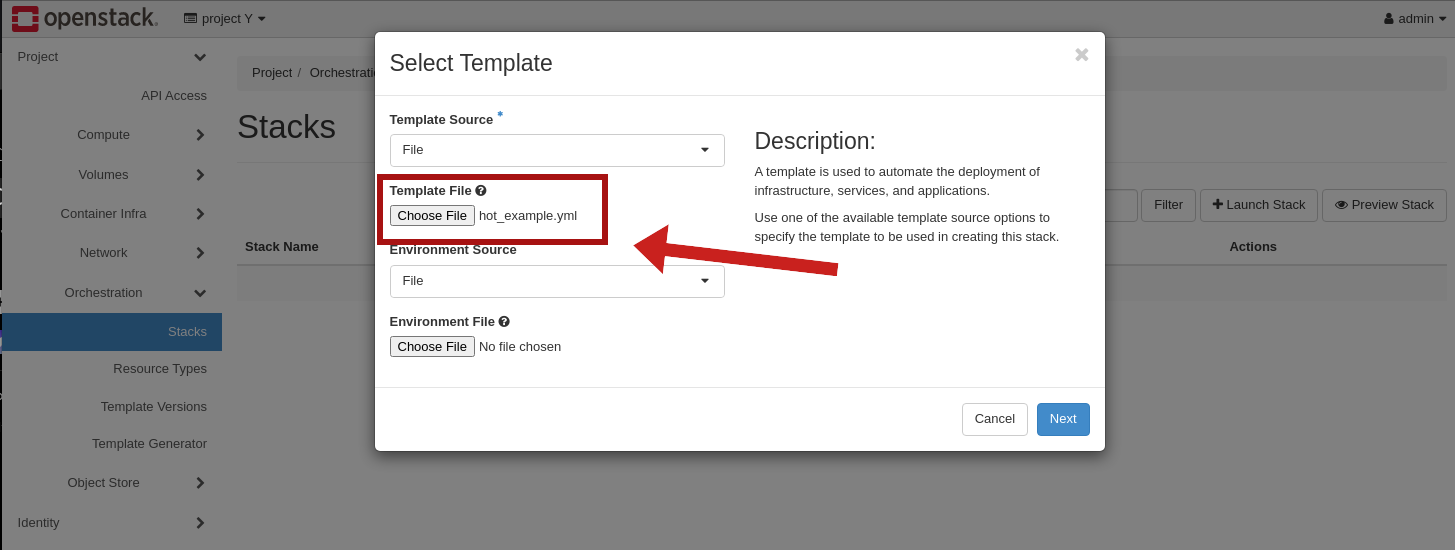
Figure 2: Select Template
For the example template listed above, the following parameters are needed to launch a running instance:
- Stack Name
- Image
- Instance Type
- Key
- Network
- Security groups
In the Launch stack window, fill out the following parameters with the type of stack you wish to deploy.
Note: Instance type refers to the flavor of instance you wish to set up.
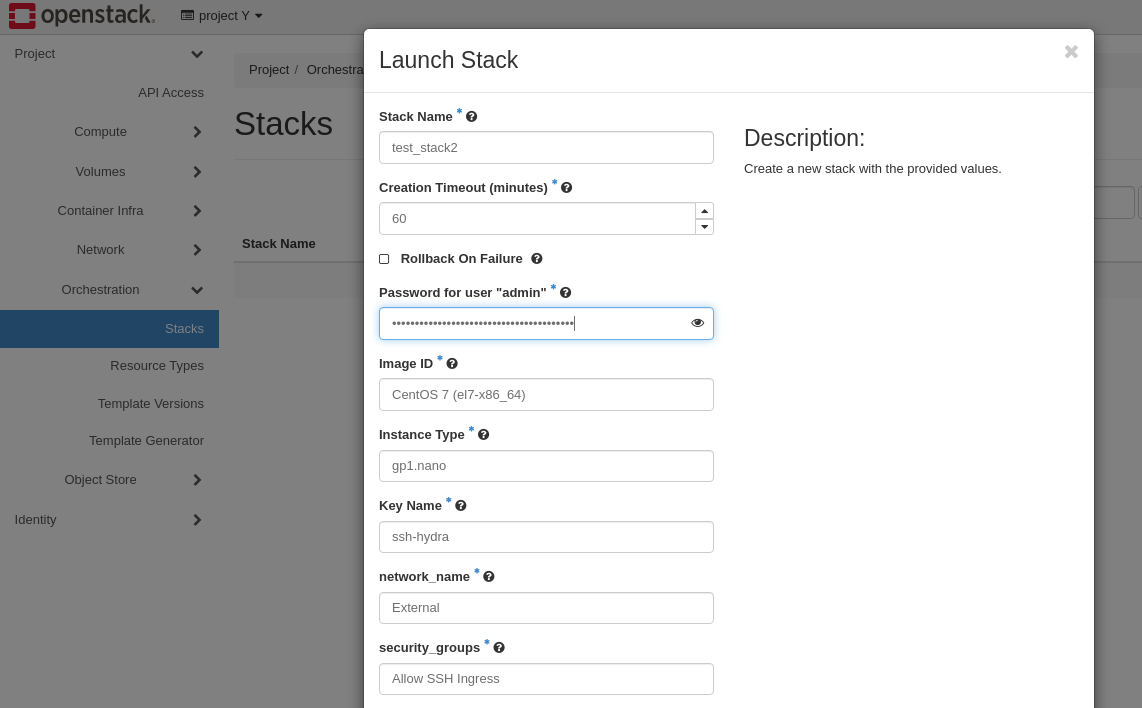
Figure 3: Launch Stack
Viewing Recently Deployed Stacks in Horizon
To view recently deployed stacks in Horizon, switch to the appropriate project where the stack was created. Then navigate to Project -> Orchestration -> Stacks to view all created stacks.
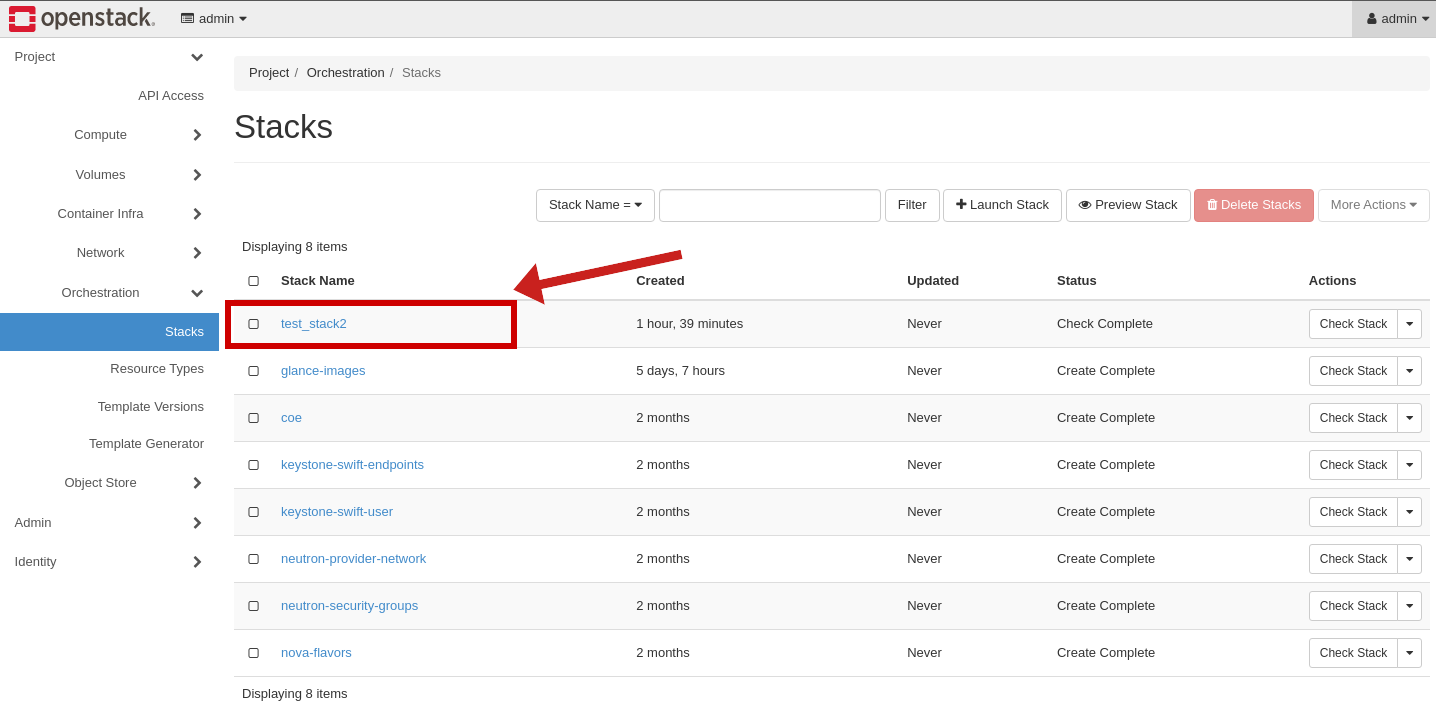
Figure 4: Stacks Created within Admin Project
Figure 4 shows the newly created test stack that was created by the example. You have the option to check the stack as well as view its current status.
If you need additional information, click the link under Stack Name and you can view an overview of the stack information, resources, events, and even a copy of the template used to create the stack.
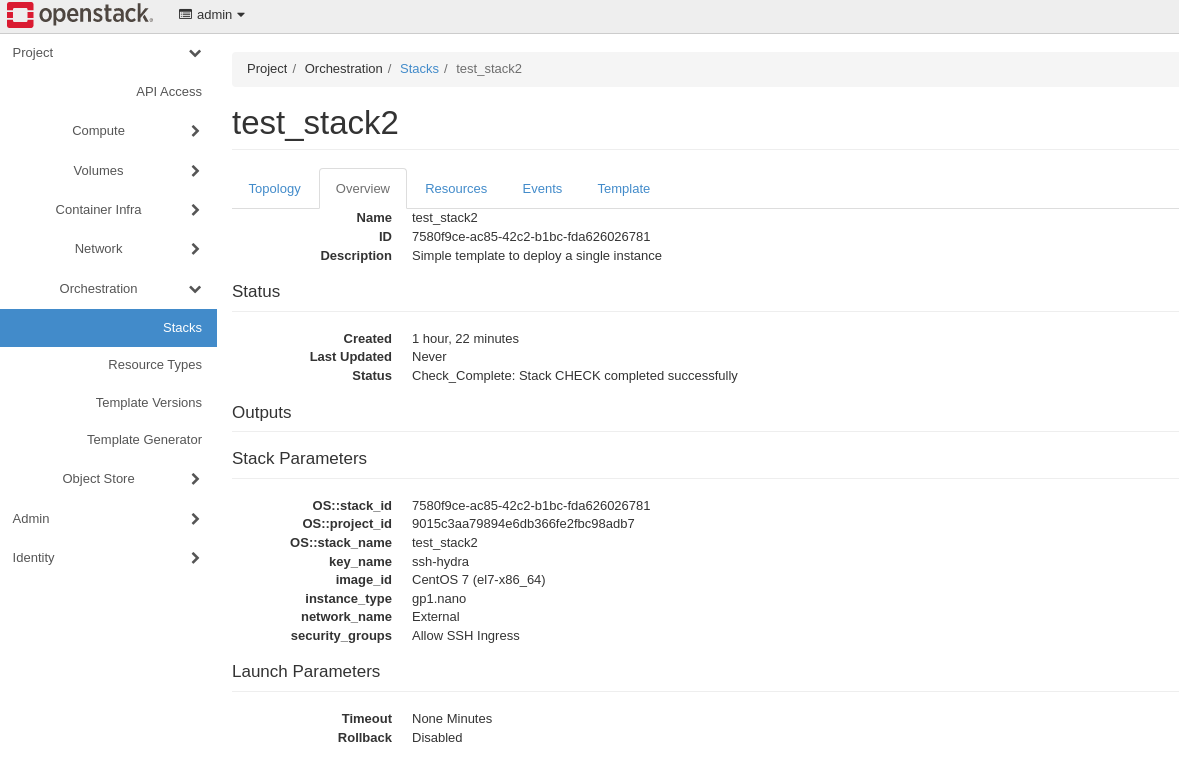
Figure 5: Overview of Test Stack
Additional Resources for OpenStack Heat Service
For the latest on OpenStack Heat Documentation visit Welcome to the Heat documentation. Further reading regarding Heat architecture can be found at Heat architecture. Additionally, OpenStack has a guide for creating your first stack through heat that can be found at Creating your first stack.